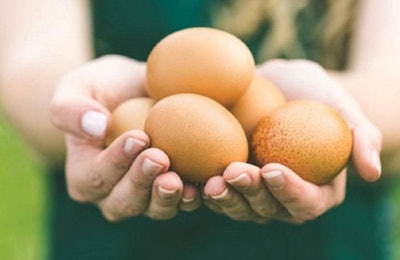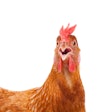
Compromise, transparency and communication can all help in keeping poultry meat and egg consumers satisfied, particularly where welfare is concerned.
According to Christine Nicol, Animal Welfare Professor at the UK’s Royal Veterinary College, both producers and consumers must compromise if a balance is to be struck between consumers’ wants and needs, and those of producers and laying hens.
Consumer consensus
Speaking at the One Health Poultry Hub webinar Keeping the Customer Satisfied, she noted there is a remarkable amount of consensus among consumers on what they believe is in layers’ interest.
People appear to be most concerned by what they deem to be industrial systems - with animals being treated as products rather than as sentient beings. They worry that animals are not able to live natural lives.
Some deem conventional cages “prisons”. While they may understand the disease risks associated with free range production they still view cages as being the worst way to keep laying hens. They think that, in cages, a bird has no chance of a natural life.
Conventional cages were banned in Europe from 2012 and most producers switched to enriched cages. However, consumers never really accepted enriched cages and further shifts in production are continuing. In 2012, 60% of layers in Europe were kept in enriched cages. This has now dropped to 50% and will continue to fall.
Happy consumers
Improving welfare does not, necessary, result in less profitable production. At some levels of production, improving welfare actually decreases production costs. With small, free-range flocks that may not be very healthy, for example, and that may be infested with parasites, simply addressing health issues will lower costs. However, improving welfare too much may compromise sustainability or resource efficiency.
There must be compromise. In higher income countries, the development that would appear to be the solution to consumer concerns is multi-tier cage free systems. While consumers don’t love these systems they do like them and they do not generate the disgust that consumers feel for cages.
From a production standpoint, these systems now almost match that of cage systems, yet birds are still free to move and express more of their natural behaviors.
These multi-tiered systems can offer a way forward. In a sense, Nicol said, what you have with these systems is a building that is highly efficient, like a cage system but with freedom for birds to move and require no more land than cage production. They represent a compromise.
This can keep consumers happy, Nicol continued, adding that consumers, if they buy something that has a high welfare label attribute other aspects to the product, whether correct or not. They may, for example, rate product quality to be higher, which can be of benefit to producers.
In those countries that have adopted cage-free production, total egg sales appear to be increasing, so it would appear that, to some extent, there was a suppression of demand for eggs due to production methods.
Free range production, as apposed to simply cage-free, may be sustainable in some location, but on a global scale it is not. Free range systems that use more land resources. If society wants to conserve nature and restore biodiversity, free range production globally is simply not possible.
Transparency
More needs to be done to reach consumers by scientists and younger generations of scientists that are digital natives have an important role to play.
Welfare issues should not be glossed over. There must be dialogue to understand what exactly consumers want and to explain to them the realities of production and trade-offs.
Some producers can be quite secretive, however there is a responsibility to provide consumers with fairer and more balanced information. Consumers would benefit from thinking about what a bird wants, what its perspective may be.
Consumers can be helped to realize that chickens are not simply small humans with feathers – they are birds. They do have welfare needs, but they are not the same as ours.

Modern multi-tier systems can be almost as efficient as cage production while still satisfying consumers’ welfare concerns. Courtesy Salmet.
What concerns consumers?
Consumers tend to be more concerned with the inherent features of agricultural production rather than risk. For example, conventional cages offer hens only a small amount of space. The quality of husbandry does not appear matter to consumers, it is the lack of space inherent to the system that concerns them. With outdoor systems, consumers accept that there might be a high disease risk, but at least birds have the chance of a good life.
Consumers have sought out cage-free eggs for years. They will pay up to 50% more for them, however they are tiring of making point of sale decisions. Those companies that inform their customers that, for example, all eggs are sourced from cage-free farms stand to benefit.
The worst thing for consumers is knowing and being reminded that they are paying for their principles. They may be prepared to pay, but they don’t want to have to think about it too frequently, Nicol argued.
For example, in Europe, she noted that Eurobarometer surveys of 30,00 consumers have revealed that nearly all respondents feel that farm animals should be better protected. In 2006, 35% believed that farm animal welfare was of “the highest importance”. By 2016, this figure had risen to 57%.
In both surveys there was agreement that, of all farm animal species, chickens experienced the worst welfare and were most in need of protection.
Within Europe, opinions appear not to be influenced by living in rural or urban areas or by political views. Women were found to be slightly more concerned about welfare than men.
Concerns are not limited to Europe. In the USA, starting from a very low base in 2012, over a quarter of egg production is now cage-free.
A recent survey of 700 Chinese consumers found that nearly half now think about animal welfare at least some of the time when making purchasing decisions, while the number of retail outlets in Latin America making cage-free commitments is growing rapidly.
















